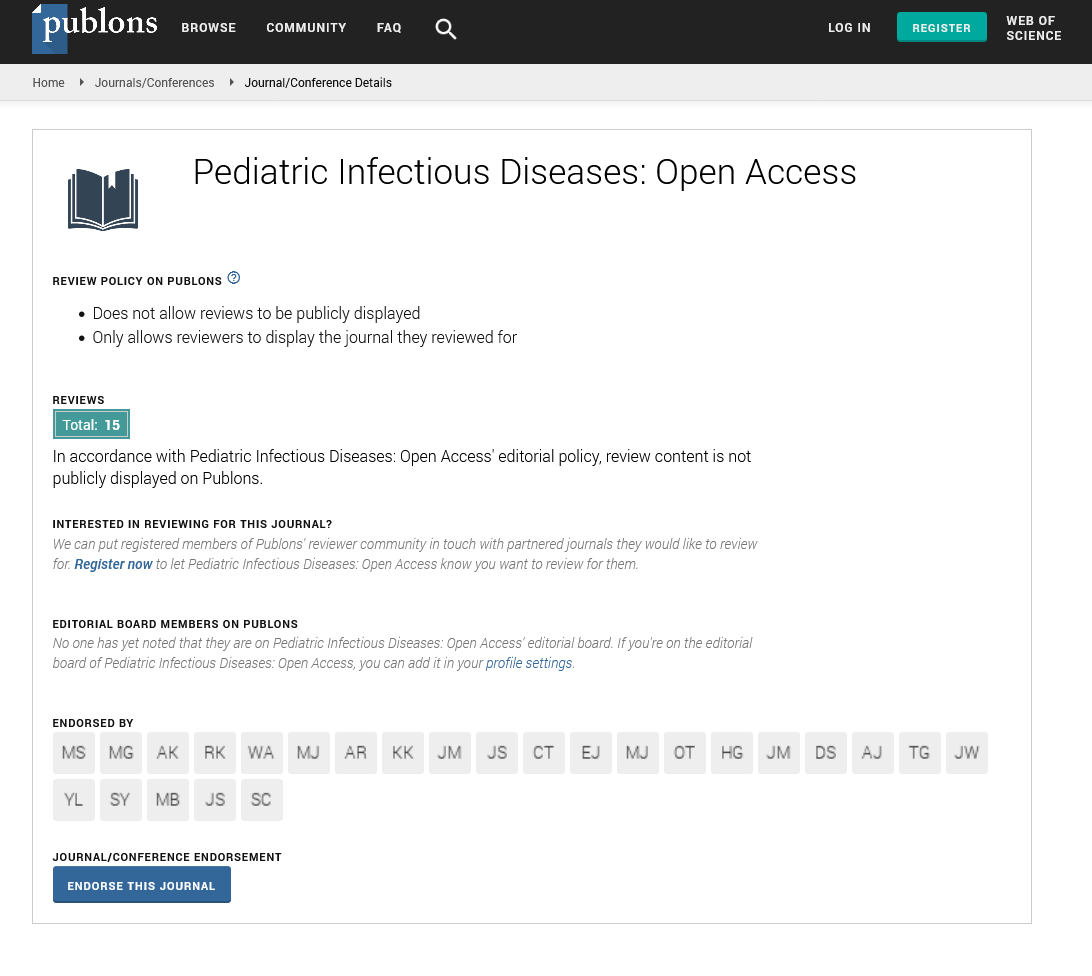Abstract
Prevalence and Risk Factors of Malnutrition among HIV-Infected Children Aged 2-18 Years: A Cross Sectional Study
Background: Malnutrition and underweightness are common problems among HIV-infected children in low and middle income countries.
Methods and findings: A single-centered, retrospective, cross-sectional cohort survey was conducted between January 1, 2014 and June 30, 2014 to assess the prevalence and risk factors of malnutrition among HIV-infected children aged 2-18 years at the Bamrasnaradura Infectious Diseases Institute (BIDI), Thailand. Clinical and laboratory data were compared between a malnutrition group, (Group A): body mass index (BMI) for age <5th percentile and a nonmalnutrition group (Group B): BMI-for-age >5th percentile and <95th percentile. One hundred and ninety-five HIVinfected children were retained for analyses. The prevalence of malnutrition was 43% (83 of 195). The following proportions were higher in Group A than B, respectively: advanced clinical staging (83% vs. 12%), PI-based HAART (73% vs. 38 %) and anaemia (48% vs. 8%) (all p<0.05). The median of Log10 plasma HIV RNA was higher in Group A than B (1.7 vs. 1.6, respectively; p<0.05). The proportions of RNA ≤ 40 copies/mL and parent caregivers in Group A were lower than B (48% vs. 86% and 35% vs. 54%, respectively; all p<0.05). Other factors did not differ significantly. In multivariate analysis, malnutrition was significantly associated severity (WHO stages 3 and 4) (OR=184.50, 95% CI=[35.72-952.73]), PI (OR= 5.38, 95% CI=[1.97-14.67]) and parent as caregivers (OR= 0.56, 95% CI=[0.34-0.92]). No significant differences between Group A and B were found in Log10 plasma HIV RNA, RNA ≤ 40 copies/mL, hemoglobin and anemia.
Conclusion: The prevalence of malnutrition was 43%. Malnutrition among HIV-infected children was associated with the severity of disease, PI-based HAART and nonparent caregiver.
Author(s):
Visal Moolasart*, Suthat Chottanapund, Jarurnsook Ausavapipit and Somtavil Ampornareekul
Abstract | Full-Text | PDF
Share this

Google scholar citation report
Citations : 230
Pediatric Infectious Diseases: Open Access received 230 citations as per google scholar report
Pediatric Infectious Diseases: Open Access peer review process verified at publons
Abstracted/Indexed in
- Google Scholar
- China National Knowledge Infrastructure (CNKI)
- Cosmos IF
- Secret Search Engine Labs
Open Access Journals
- Aquaculture & Veterinary Science
- Chemistry & Chemical Sciences
- Clinical Sciences
- Engineering
- General Science
- Genetics & Molecular Biology
- Health Care & Nursing
- Immunology & Microbiology
- Materials Science
- Mathematics & Physics
- Medical Sciences
- Neurology & Psychiatry
- Oncology & Cancer Science
- Pharmaceutical Sciences


